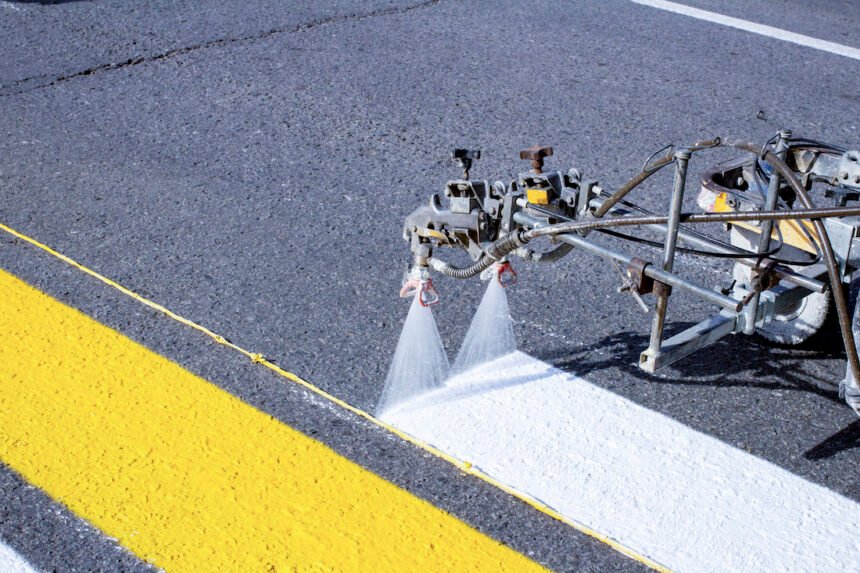Pavement markings play a critical role in ensuring road safety, improving traffic flow, and enhancing the visual guidance needed for all types of drivers and pedestrians. From highways to parking lots, school zones to commercial facilities, professionally applied road markings are essential for organizing space and reducing the risk of accidents. This is where the expertise of a pavement marking company comes into play.
Choosing the right service provider for road striping and surface marking goes beyond simple paint application. It involves understanding materials, techniques, compliance standards, and long-term durability. In this comprehensive guide, we’ll explore the importance of pavement markings, what to look for in a marking service, and how to avoid common pitfalls during your project.
The Purpose and Impact of Pavement Markings
At first glance, pavement markings may seem like just lines on the ground. But in reality, they are carefully planned safety and organizational tools. Their presence can affect driver behavior, pedestrian navigation, and the general flow of traffic across private and public spaces.
1. Improved Safety
Clearly marked roads significantly reduce the risk of collisions, especially in areas where traffic patterns shift, such as intersections or merging lanes. Pavement markings guide drivers on lane placement, stopping points, and turning boundaries.
2. Efficient Traffic Flow
Properly applied markings help direct vehicle movement, regulate speed, and streamline traffic patterns. For large commercial facilities, factories, or distribution centers, internal traffic flow is also critical for operational efficiency.
3. Accessibility and Compliance
Markings are essential for ADA compliance in parking lots and public spaces. This includes designated accessible parking spaces, loading zones, and crosswalks.
4. Visual Appeal and Organization
Clean, professional line striping can enhance the appearance and usability of a property. Parking lots with faded or irregular lines may appear neglected and uninviting.
Types of Pavement Markings
Pavement markings serve different functions depending on the type of facility, surface, and purpose. The materials and methods used will also vary depending on the surface (asphalt vs. concrete) and environmental conditions.
A. Traffic Lane Markings
These include centerlines, edge lines, and directional arrows, often found on public roads and private access lanes.
B. Parking Lot Striping
Used in commercial and residential lots to define individual parking spaces, traffic lanes, fire lanes, and ADA-compliant spaces.
C. Crosswalks and Stop Bars
Pedestrian zones must be clearly marked to ensure visibility and safety. These markings are often paired with traffic signs for added visibility.
D. Symbols and Stencils
These include custom stenciled icons such as bicycle lanes, school zone markings, and directional indicators.
E. Thermoplastic Markings
This highly durable material is melted and applied to the surface, creating long-lasting, weather-resistant lines. It’s especially useful for high-traffic areas.
Materials Used by Pavement Marking Contractors
A professional pavement marking company understands that not all surfaces are alike—and neither are the marking materials. Some of the most commonly used materials include:
- Water-Based Paint: Cost-effective, quick to dry, and environmentally friendly. Best suited for low-traffic areas.
- Solvent-Based Paint: More durable than water-based options and suitable for cold or wet climates.
- Thermoplastic: Applied hot and fused to the surface. Offers excellent longevity and visibility, especially when embedded with glass beads.
- Preformed Tape: Used for temporary markings or specialty areas. Quick to apply and remove.
- Epoxy and MMA (Methyl Methacrylate): High-performance materials known for durability and visibility in demanding environments.
Material selection depends on your surface type, climate, traffic volume, and budget. A reliable provider will help you determine the right solution for your project.
Choosing the Right Pavement Marking Company
When selecting a pavement marking company, consider more than just pricing. Expertise, safety compliance, and equipment quality are critical to ensure a successful project. Here are key factors to evaluate:
1. Experience and Track Record
Look for companies with a proven history of delivering similar projects. Experience with municipal contracts, commercial facilities, and complex layouts is a strong indicator of competence.
2. Up-to-Date Equipment
Advanced line striping machines and laser-guided technology ensure accuracy and consistency. Modern equipment also improves efficiency and minimizes downtime.
3. Certified and Trained Staff
Skilled technicians are essential. Make sure the company invests in training, adheres to safety standards, and understands DOT and ADA regulations.
4. Comprehensive Service Offerings
A full-service pavement marking company should offer everything from layout design and surface preparation to application and maintenance.
5. Use of Quality Materials
Cheap paint may wear off quickly, costing you more in the long run. Ask about the products being used and their expected lifespan.
6. Clear Communication and Project Planning
Timely execution, transparent quotes, and responsive communication are marks of a professional outfit. Delays or vague estimates often indicate poor project management.
Application Process: From Planning to Execution
Here’s a breakdown of what you can expect during a typical pavement marking project:
Step 1: Site Assessment
The contractor inspects the site, evaluates surface conditions, and confirms measurements.
Step 2: Design and Layout
Using blueprints or onsite markings, a layout is created to meet functionality and regulatory requirements.
Step 3: Surface Preparation
This may involve cleaning, pressure washing, or applying a primer—especially for worn or unsealed surfaces.
Step 4: Application
The team applies the chosen materials using striping equipment or thermoplastic applicators. Reflective beads may be added for nighttime visibility.
Step 5: Dry Time and Inspection
Paint or thermoplastic requires a curing period. Once dry, the site is inspected for accuracy and durability.
Maintenance and Re-striping
Even the best markings will fade over time due to weather, traffic, and UV exposure. Routine maintenance ensures safety and aesthetic appeal.
- Re-striping is recommended every 1–2 years for high-traffic areas.
- Thermoplastic and epoxy markings may last 3–7 years depending on use.
- Regular inspections help identify worn areas before they become safety risks.
Many clients choose to establish long-term service agreements with their pavement marking company for regular evaluations and upkeep.
Avoiding Common Mistakes
When working with a pavement marking service, be sure to avoid these frequent issues:
- Skipping surface prep: Dirty or oily surfaces prevent proper adhesion.
- Choosing the wrong materials: Low-quality paint may peel or fade quickly.
- Ignoring weather conditions: Rain or humidity can compromise application and dry time.
- Poor layout planning: Misaligned or non-compliant striping causes confusion and potential fines.
- Rushing the process: Cutting corners to save time often leads to rework and additional cost.
Benefits of Working With Professionals
Professional contractors offer value beyond basic installation. A skilled pavement marking company delivers:
- Accuracy in layout and alignment
- Durability of markings for long-term performance
- Compliance with all local and national regulations
- Visual clarity to enhance traffic safety
- Reduced liability for property owners and operators
When to Re-Mark Your Pavement
Signs that it’s time for new markings:
- Faded or patchy lines
- New layout or traffic flow changes
- Renovations or resurfacing
- Complaints from users or safety concerns
- Seasonal maintenance scheduling
Even minor improvements in line visibility can significantly improve safety and functionality.
Final Thoughts
The importance of choosing the right pavement marking company cannot be overstated. Whether you’re managing a parking lot, private road, or industrial facility, high-quality striping and marking services make your space safer, more organized, and fully compliant.
Partnering with professionals who understand the nuances of materials, application methods, and regulatory standards ensures your project is completed efficiently and correctly the first time. By investing in expert services, you not only enhance your property’s value but also demonstrate a commitment to safety and precision.







